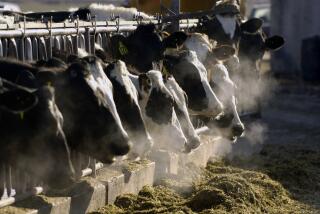H5N1 bird flu found in four Southern California rats

- Share via
- Rats in Riverside County are the latest mammal species to be infected with H5N1 bird flu
- Identification of virus in rats raises concerns about potential infection pathways to people and their pets
The U.S. Department of Agriculture has added black rats to the growing list of mammals that have been infected by H5N1 bird flu.
The rats were located in Riverside County, and news reports suggest they were living in an area where two infected poultry farms had recently been identified.
The discovery of H5N1 in black rats — a typically urban species — provides another route for potential exposure to humans and their pets. The virus can be transmitted via droppings, urine, blood and saliva. The rats also provide a vessel for the virus to move between farms and houses.
A CDC report on bird flu shows potential transmission of bird flu between exposed dairy workers and indoor pet cats. The report also provides a window into the lack of reporting and cooperation at dairy farms and by dairy workers.
It is unclear what agency initially identified and tested the rats — or why the rats were tested. A spokeswoman for Riverside County’s public health department said she was unable to provide a response to those questions, and directed them to the USDA. The USDA did not respond to questions Friday.
These are the first rats identified as having the disease in the United States since 2021, when this latest version of the H5N1 virus made its debut in North America. Other mammal species that have since been infected include skunks, domestic cats, bottlenose dolphins, harbor seals, foxes, mountain lions and coyotes.
More than 50 species of North American mammals have been infected, including tens of thousands of dairy cows — with cases confirmed in at least 973 herds across 17 states.
It’s probably not good that one former USDA scientist called the outbreak a ‘s— show.’
The discovery, disclosed Wednesday, comes at a time when the Trump administration is trying to rehire dozens of USDA bird flu scientists it had recently fired, based on cost-cutting recommendations from the so-called Department of Government Efficiency, or DOGE.
Although the USDA did not respond to inquiries from The Times about the rats or the fired employees, the agency said in a statement to CBS News that it was working “to swiftly rectify the situation,” and said it had exempted veterinarians and other emergency response personnel focused on bird flu.
The agency “continues to prioritize the response to highly pathogenic avian influenza,” it told the news agency.









